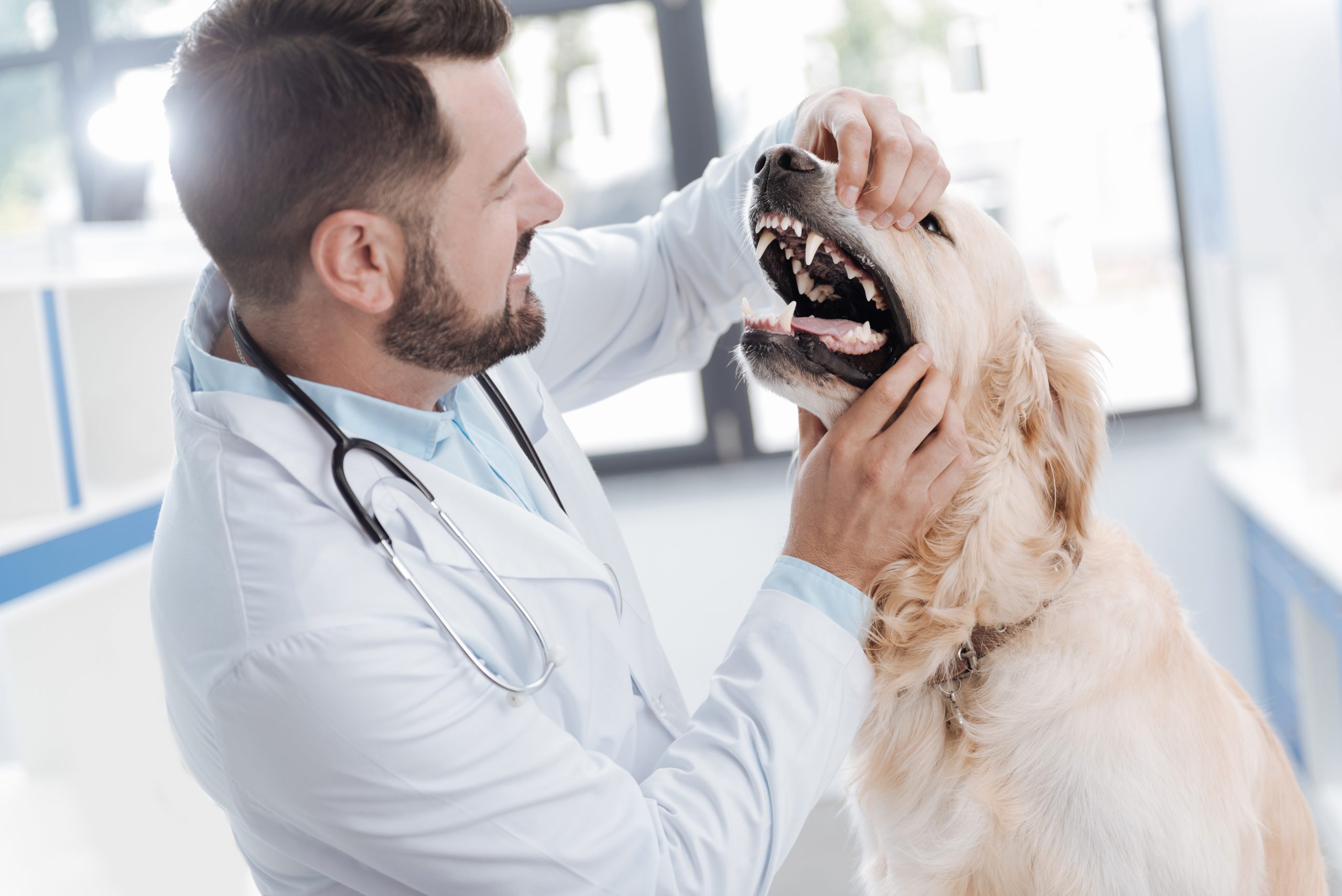The health of your pet’s teeth is crucial to its happiness and quality of life.

Gingivitis (inflammation of the gums) in pets is painful, and can cause teeth to rot. The symptoms can be easily missed because our pets will often continue to eat normally despite dental discomfort, making it seem like they are not in pain and in some cases leaving the dental disease going un-noticed.
Why do our pets suffer from dental problems?
Our pets are living longer and as a result, vets are seeing an increase in dental problems.
The breed of a dog can also have a big impact, small snub nose breeds such as the Pug and Llasa Apso often have teeth overlapping in their mouths as their jaw is too short to accommodate all their teeth.
This can lead to food becoming trapped between the teeth which eventually causes plaque build-up. Some breeds are also pre-disposed to dental disease, grey hounds and some cats can often suffer from gingivitis as well as those that are on a high carbohydrate diet.
Dogs and cats were designed to eat meat and chew bones. However, with advances in nutrition, this has contributed to the lengthening of our pet’s lifespan. Whilst they cannot obtain a ‘complete’ diet with meat alone, you can help a little by feeding good quality foods and treats containing higher meat content and fewer carbs.
My pet is eating normally, so how can I tell they have dental problems?
It can be very difficult to diagnose dental disease in some pet’s if they will not let you look in their mouths. Just lifting up the lips on either side of the mouth and checking along the gum line can give you a lot of information. If there is a line of soft yellow plaque then this means that your pet’s teeth need attention, but you can often improve things simply by brushing. If there is a layer of thick brown plaque over some or all of the teeth, then this is hard calculus and your pet needs immediate dental treatment. This calculus can often hide loose or rotten teeth. If left un-treated plaque and calculus can lead to spread of infection up the tooth root and teeth will fall out or worse develop an abscess at the root.
Obviously, some rescue animals or animals with painful teeth may not let you look in their mouths, in which case it’s best to ask your vet for some help. If dental disease is suspected, for example, if your pet’s breath is very smelly, your vet may recommend that they are sedated to check.
Can dental disease really cause other illness?
Apart from being painful and leading to potential abscesses, dental disease can also cause more serious health problems. Large levels of bacteria in the mouth can spread into the blood stream and lodge in small blood vessels in the kidney causing kidney infections, especially in cats. If your pet has heart disease it is even more important that their teeth are kept clean as bacteria can lodge on damaged valves and cause an infection in the heart which is a life-threatening condition.
How can I brush my pet’s teeth?
The best way to ensure success with teeth brushing is to start when your pet is young. Even cats can be trained this way. Start with a small finger brush and a tiny amount of toothpaste, you can get different flavours for cats and dogs. Always use specific pet toothpaste because it is fluoride free, fluoride is toxic for our pets if swallowed.
The idea initially is just to get your pet used to the brush and not to brush their teeth.
o Keep sessions short and always reward with a treat at the end.
o Just place the brush gently over the canine on one side of the mouth and then the other and reward. Some pet’s will accept this more readily than others so progress at a speed which is comfortable for your pet. If your pet shows discomfort at any point, then back track and take things slower.
o Once you can move the finger brush right to the back of the teeth on both sides you are ready to use a proper toothbrush on your dog or cat and start brushing.
o Pet tooth brushes have specially designed heads and longer handles for ease of brushing. Initially just brush over the canines and once your pet is happy with this then progress to the rest of the teeth.
o Concentrate along the gum line to remove soft plaque. Do not worry if your pets gums start to bleed. If you have not brushed their teeth before this will often happen and is a sign of mild gingivitis, the first sign of dental disease.
o Keep brushing regularly and the gum health will improve.
I can’t brush their teeth – What else can I do?
Some pet’s, especially cats, no matter how slowly you progress will not accept brushing. Do not panic there are things that you can do. For animals that suffer from gingivitis and plaque build-up, a regular scale and polish by your vet may be required. Though this may seem expensive it will be cheaper than extensive dental work if damaged teeth need to be removed.
